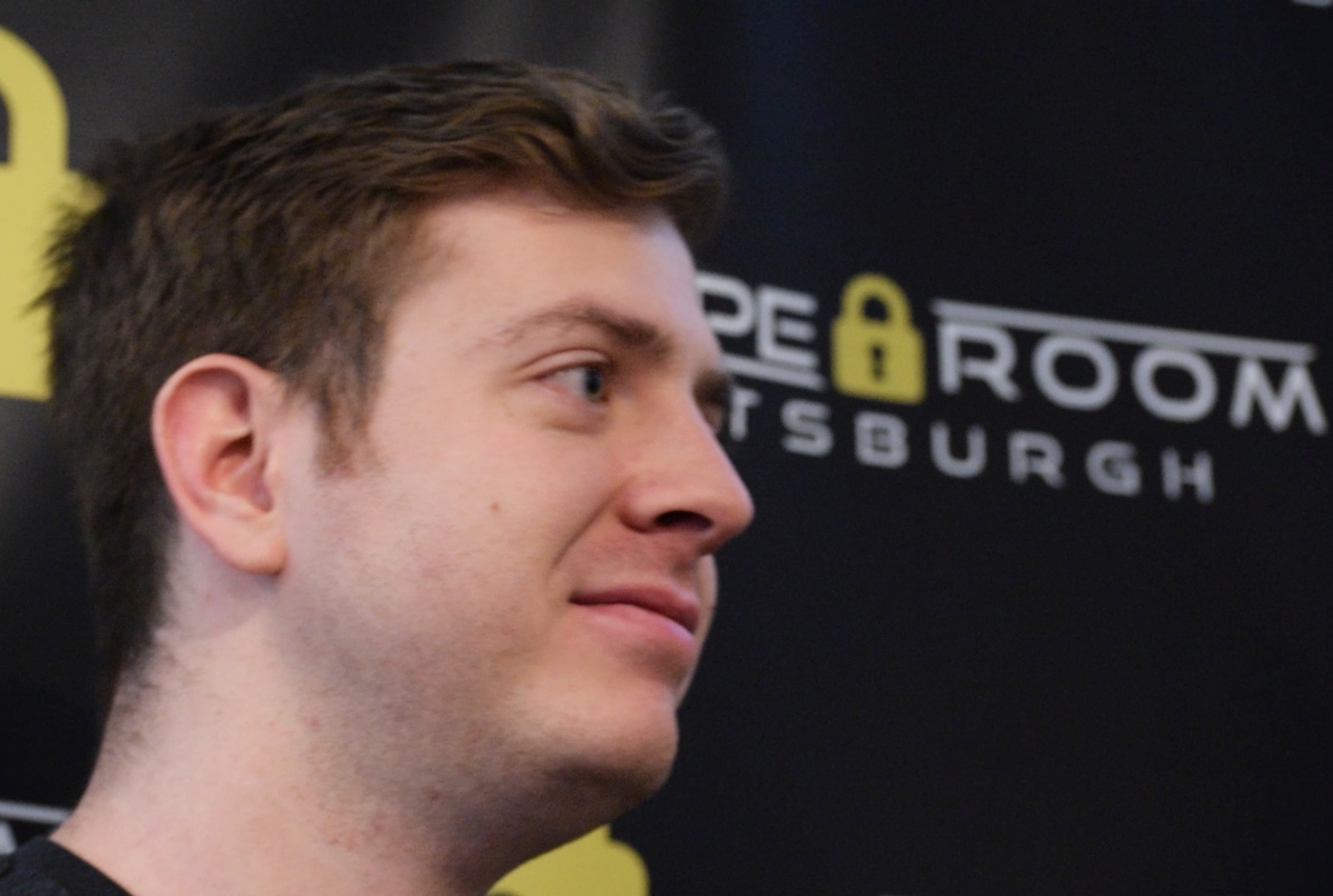

Joe Deasy graduated from Duquesne in 2012 with a degree in digital media. He currently maintains two Escape Room Pittsburgh locations: one in Homestead, and his first one in Greenfield.
By Craig Taylor | Staff Writer
Duquesne graduate Joe Deasy is the co-owner of one of Pittsburgh’s premiere escape room companies, Escape Room Pittsburgh. A 2012 graduate of Duquesne’s JMA program, Deasy uses his degree in digital media arts to handle the graphic design, video and sound editing of his rooms.
“A lot of the stuff I learned at Duquesne I’m using at my full-time job here at the escape room now,” Deasy said.
The attractions lock participants in a room and ask them to escape by searching for clues and solving puzzles. They’re usually themed around a scenario, like breaking out of a jail cell or finding a humanity-saving cure in a laboratory.
After playing an escape room in Budapest, Deasy was inspired to bring the idea over to Pittsburgh.
“I immediately loved the concept. I fell in love with it, and I thought it was the coolest thing I’d ever done,” he said. “And I thought, ‘You know, I could do this, I could make this into a business.’”
Along with his cousin, Joey opened Escape Room Pittsburgh’s first location in Greenfield and has since expanded to the Waterfront.
In researching this article, I had the opportunity to try one of Deasy’s puzzle rooms at his Homestead location, along with other members of The Duke staff. Their latest puzzle, Carnegie’s Millions, has teams breaking into a bank vault owned by Andrew Carnegie. Tasked with retrieving the Stone of Destiny, participants have one hour to break into each level of Carnegie’s vault, lest the stone fall into the hands of the Illuminati.
Inside the room is an elaborate, multi-part puzzle that leads teams from Carnegie’s study, to the bank vault and finally, inside his treasury to reclaim the stone. Many of the props are real, including the bank vault which Deasy built the escape room around.
Deasy and his cousin build all the puzzles themselves, something that separates them from similar attractions.
“A lot of the other escape rooms are franchises, trends or buy rooms. We build and design everything,” Deasy said. “We’re inspired by a lot of movies. Any time we watch a movie and see something cool we take notes and kind of put our own spin on things.”
When contestants solve puzzles, the solution triggers an electronic response that activates whatever mechanism they’ve unlocked. The technology, called powerline communication or PLC, also runs factories and roller coasters.
“We’re one of the few escape rooms in the U.S., maybe even the world that uses the technology that we have,” Deasy said. “Not too many people that do escape rooms have this. We’re well ahead of the curve.”
Whereas typical escape rooms deal with lock-and-key type puzzles, the Waterfront location uses PLC technology to make their escape rooms more immersive. None of the solutions are manually activated by staff, who instead stand-by, watching from security cameras, and occasionally offer hints if contestants hit a wall.
Deasy says that teams who don’t communicate or are too scared to take charge will fail, which is why companies like Google have taken their new hires to Escape Room Pittsburgh to observe how they work in a team under pressure.
Deasy recalls one story of a company who was hiring applicants based partly on their performance in the escape room.
“Somebody told the three candidates that they were hiring to come to the escape room. They were in full suits, handcuffed and the job interview was doing the escape room,” he said.
“I always prefer to call it a ‘different night out.’ If your normal routine is just going out to a movie or going out to grab food, why not do something different?”




